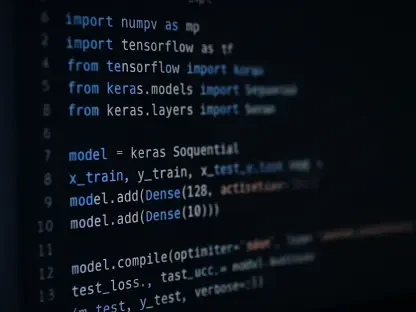Shell scripts form the unseen skeleton of modern computing, orchestrating a myriad of background operations crucial to technological ecosystems. Yet, despite their indispensable nature, many go unnoticed as weak links prone to significant errors, posing an underappreciated security threat.
The Hidden Vulnerabilities Lurking in the Technology Backbone
Shell scripting, the engine behind server deployment, CI/CD processes, and automating repetitive tasks, pervades various tech-driven sectors. Despite its widespread utility, the reliability of shell scripts has come into question. Complex syntax and the inherent dynamic environment can lead to unforeseen vulnerabilities. These scripts, operating as multi-lingual commands, possess the potential to trigger catastrophic outcomes if not managed with precision. While shell scripts hold the potential to streamline processes, they also hang precariously as potential points of failure.
The Complexity Unveiled
Shell scripting is fraught with complexities that stem from its dynamic nature, which often combines multiple commands and languages in seemingly chaotic symphonies. This complexity results in programs that are not easily read or predicted, leading to real-world issues like data breaches and halted operations. The reliance on dynamic elements introduces unpredictable behaviors, with severe consequences for any oversight in their execution. A single error can ripple through systems, disrupting services and leaking sensitive information, underlining the need for more robust safety measures.
The Art of Semantics-Driven Static Analysis
Semantics-driven static analysis presents a solution to the riddles of shell script safety. Unlike preceding syntactic evaluations, this advanced tool assesses scripts on a deeper level by interpreting their logical frameworks and relational structures. Effect analysis and interprocess interaction management are proposed methodologies aimed at identifying errors before they mature into genuine issues. By understanding the semantics, or the intentional meaning of code, this analytical approach predicts and mitigates errors, ushering in a new era of script reliability.
Illuminating Expert Opinions and Success Stories
Nikos Vasilakis, a prominent voice in computational research, underscores the promise of semantics-driven analysis as transformative for shell script security. By sharing theoretical insights and practical experiences, he illustrates how past developer challenges have led to innovations in script analysis. Historical cases where scripts triggered unanticipated failures have showcased the importance of finer semantic analysis, enabling developers to proactively tackle potential problems. Through real-world examples, this approach has shown potential to reshape the landscape of scripting procedures for heightened safety.
Practical Steps for Implementing Semantic Analysis Tools
To harness the full potential of semantics-driven strategies, practical application is imperative. Current tools like ‘shellcheck’ offer a syntactic foundation, albeit without semantic depth. For more advanced users, adopting systems like stream reasoning engines and semantic models is recommended. These novel tools are in development stages and promise to enhance the precision and preventive capabilities of script evaluations. Users are encouraged to engage with these emerging technologies to preclude script failures preemptively, thereby promoting more stable and secure tech ecosystems.
A New Horizon for Shell Scripting
As the digital realm grows more complex, safeguarding shell scripts against looming errors is more crucial than ever. By integrating semantics-driven static analysis, the future of shell scripting pivots away from risk toward reliability and safety. Addressing current deficiencies in shell scripts through this sophisticated method can dramatically decrease error instances and secure systems against potential catastrophes. This advancement in semantic comprehension applies across the board, ensuring safer programming practices in environments everywhere and setting the course for a new standard in script development.









